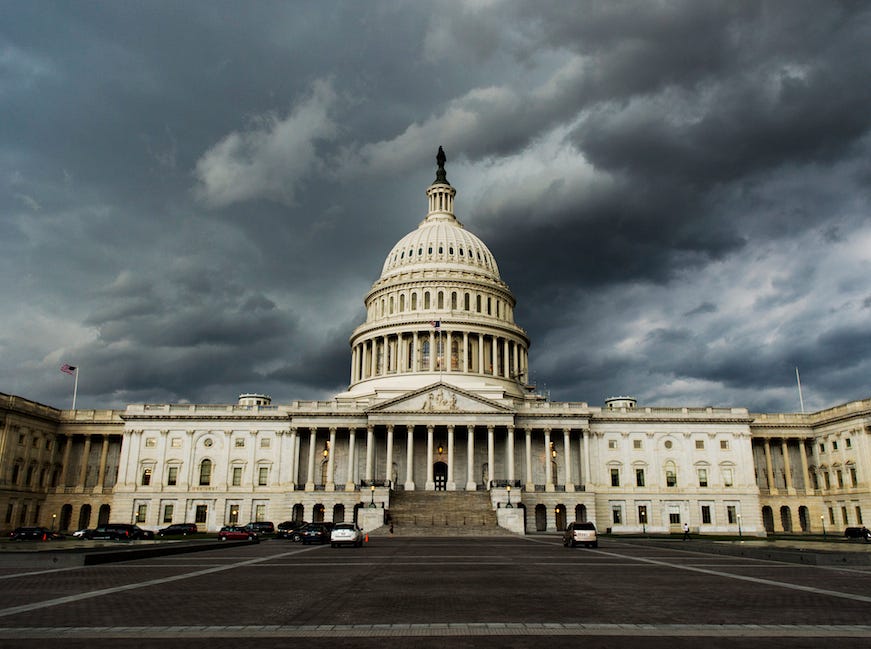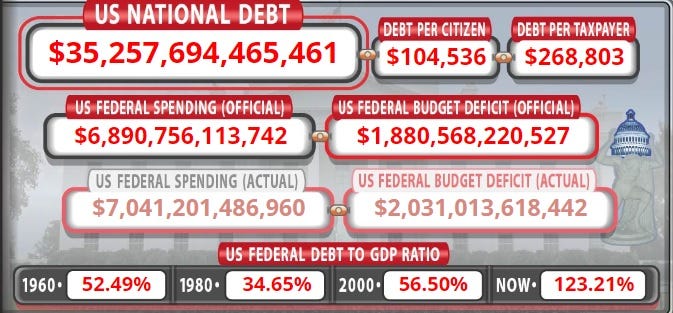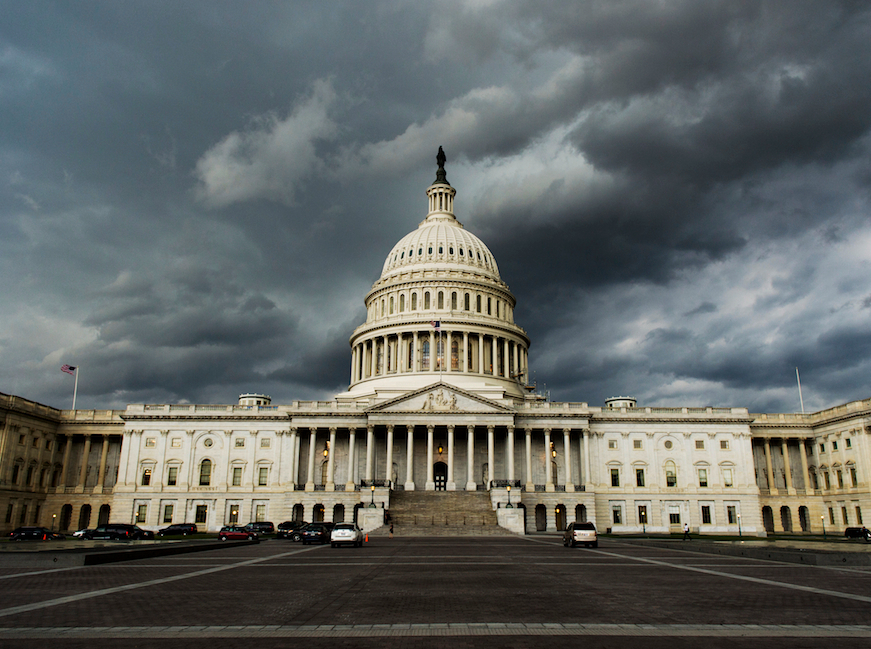
The U.S. national debt crisis is growing faster than the economy, and solutions are nowhere in sight.

By Greg Maresca
July 4, 1776, is arguably the most significant day in American history. Another noteworthy day of Americana arrived on Monday, July 29, 2024, as a footnote when it is anything but.
July 29, 2024, marked a significant milestone in American history, albeit one that was not celebrated. It was the day our national debt surpassed a staggering $35 trillion.
Like so many other things, such a U.S. national debt crisis was simply unimaginable a generation ago.
It’s no wonder no politician, regardless of party, wants to talk about it, let alone do anything to reduce it.
The same holds true for the third rail of politics – Social Security.
The Social Security Administration (SSA) predicts a dire future. They believe that half of those who are now 80 will outlive the system’s ability to pay, which will be exhausted by 2036. Every penny SSA has ever collected has been paid out. Initially designed as a pay-as-we-go system, Social Security has become a government Ponzi scheme – a complex web of IOUs with no real retirement plan.

To solve the problem, the government will have to either raise FICA taxes by 33%, or cut benefits by 25%, or even more over the next decade. Bernie Madoff went to jail for the same type of Ponzi scheme Uncle Sam has done with your FICA taxes.
Isn’t it high time we hold our government to the same standards of fiscal responsibility that we hold ourselves?
If Social Security is the third rail of politics, the electric chair is the exploding $35 trillion federal debt.
Writing out all the zeroes only serves to underscore the enormity of the problem: $35,000,000,000,000.00. If you placed $35 trillion dollar bills from end to end (just over six inches long), they would nearly reach Pluto. According to Just Facts, as of August, the debt per household is $266,745.00. Keep in mind that it took more than 230 years for our national debt to reach $17 trillion. This is a burden that our children and grandchildren will have to bear.
Our debt has boldly gone where no government has gone before.
The culprits are many. High inflation brought on by stimulus spending and a print-first-ask-questions-later monetary policy has only increased debt interest payments. Every time a new dollar is created, the value of each existing dollar drops. Yet stocks keep pushing higher.
The total debt of every country is $91 trillion, more than a third of which comes from the U.S. The International Monetary Fund underscores that such a sum can destabilize the global economy.
“We’ve hit a turning point,” said Kenneth Rogoff, former chief economist at the International Monetary Fund, who calls the rising interest on our debt “a huge economic problem and the biggest thing that’s happened in the global economy in the last five or 10 years.”
The interest alone this year is nearly $1 trillion. The nonprofit Committee for a Responsible Federal Budget estimates that all the policies in Kamala Harris’ plan would increase deficits by $1.7 trillion over a decade. Uncle Sam is already running trillion-dollar-plus deficits annually.
Debt-to-GDP ratios can be misleading as they divide the debt by GDP, which is $25.44 trillion, meaning the debt is equivalent to 137% of GDP. Using GDP growth as justification for continued federal deficits is a mistake that continues unabated.

Congress cannot keep its fiscal house in order by spending nearly $12 million per minute. This should be a wake-up call, but instead, the snooze continues.
The Feds should spend only what they collect. Such common sense should be law. In 2023, $4.4 trillion was collected, meaning the debt is nearly eight years’ worth of revenues.
The numbers are significant, but the equation is relatively simple, and so is the solution. Yet, fiscal responsibility is drowned out by competing political issues.
Debt should only be used for that proverbial “rainy day.” According to the U.S. Treasury, Congress has run surpluses in the past (five in 50 years). Surpluses are possible, and since Congress holds the purse strings to keep taxes in check, a deep cut in spending is warranted, followed by tax cuts once the federal budget is balanced.
When politicians spend recklessly, we all lose. As a nation, it is long past time to debate monetary policy by both parties. Instead, this U.S. national debt crisis is ignored.
The government doesn’t generate income; it acts as a collection agency, and its investments rarely pay for themselves.
In the end, when the bill is rendered and it comes due – especially Medicare and Social Security – it will be paid by “We the People.”
Guaranteed.


Leave a Reply